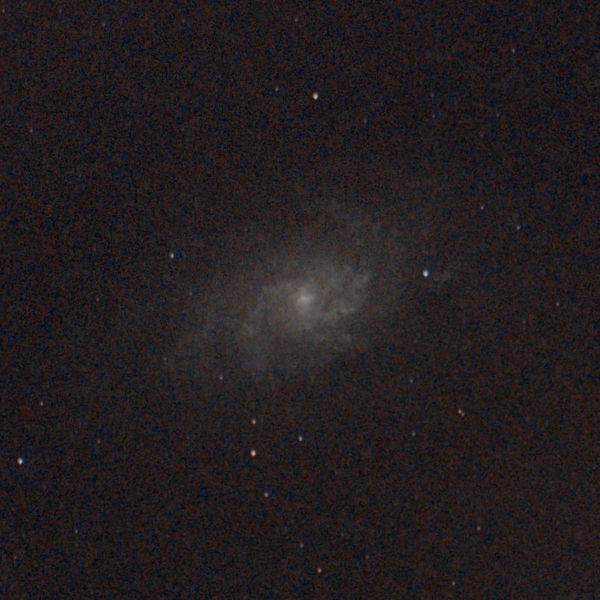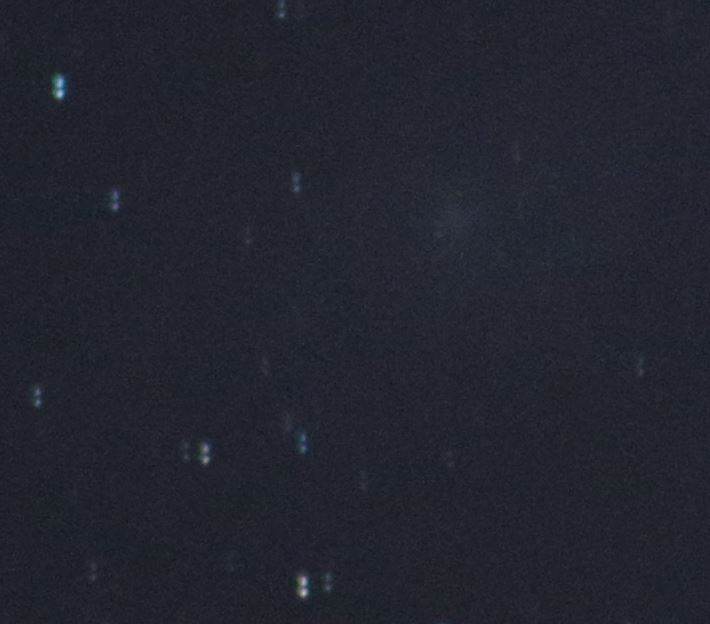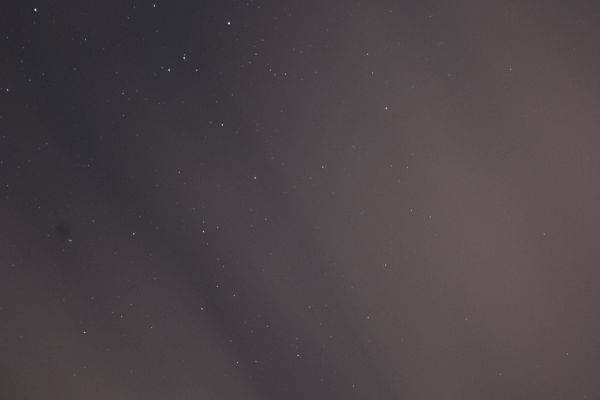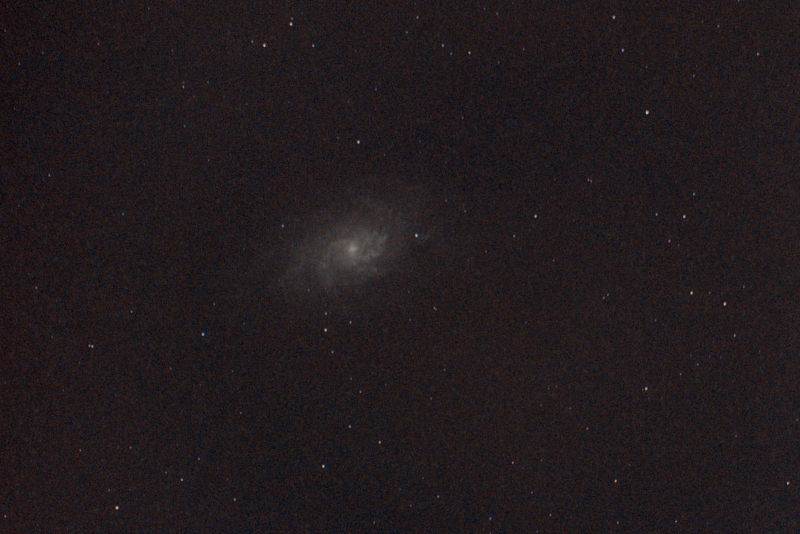
I couldn’t have asked for a better evening to get outside for a photo session. It was cool, the air was clean, and the skies were clear. I knew ahead of time that it was going to cloud up a bit after midnight. But with the sun setting close to 19:30, I was looking forward to a good session and a full night’s rest. Well, I didn’t experience either of those things. But that’s kinda how it goes sometimes. In this hobby, there are an infinite number of things that can go sideways at a moment’s notice. Every now and then, they all team up to go sideways together. That was my night last night where I easily had one of the most brain-busting, spirit-breaking, gut-wrenching sessions to date resulting in an epic astrophoto fail.
It Was A Good Plan
I was excited. The plan was to get outside again with the 75-300mm lens as I was definitely impressed with the magnification at 300mm. Shooting with a Canon APS-C camera, the crop factor (or focal length multiplier) is 480mm! So I was definitely game to find a target that I normally wouldn’t even try to image with my 135mm lens. Given how well the 75-300mm lens tracked the other night, I decided to give the Triangulum Galaxy a go.
I’m not used to using telephoto lenses in my astrophotography pursuits. But I learned enough in my previous session to modify my setup process to get focused and aligned in a jiffy. Well, that is what I thought at least.
Astrophoto Fail #1
My plan was to tape the lens in place at 300mm, achieve focus and tape the focus ring in place, and then run my normal polar alignment routine. Well, the only easy part of this plan was taping the lens in place at 300mm.
I was going to be lazy and use Polaris as my focus star. However, with my sky conditions and the 75-300mm lens stopped at f/5.6, it was clear to me that I would not get the focus results I wanted using Polaris. I tried and tried, but it just wasn’t bright enough. OK, no worries, I’ll just line up Deneb directly overhead and use that.
Astrophoto Fail #2
I knew that I was going to struggle identifying stars in the live view with the lens at f/5.6. That’s not even considering the fact that I also loaded my Optilong L-Pro filter as well which effectively stops the lens down a little more. What I didn’t count on was how difficult it was going to be to find anything in the sky with the lens zoomed out to 300mm with nothing to help me spot where my camera was pointing in the sky.
It took me a good 5 minutes to get Deneb in my field of view. This really shouldn’t have been that hard since Deneb was literally directly overhead. But for whatever reason, I really struggled to find Deneb. If this was a movie, you’d be hearing an ominous and foreboding soundtrack slowly building in the scene. But alas I found Deneb so everything is back on track – right? Well…
Astrophoto Fail #3
The Bahtinov mask I printed has pretty wide slats which means it doesn’t create a very large diffraction pattern in my image. It took me a minute or two to actually figure this out. I had to digitally zoom into my live view and only then did I begin to see the diffraction spikes. To be honest, I’m not really sure what to think about this. It was more unexpected than it was a straight fail. I mean, I suppose I can live with this without any issues now that I know this.
Astro Photography Tool (APT) has a wonderful tool called Lens Control. For automatic lenses, you can use the software to control the lens focus. You just have to make sure that when you are finished focusing, you switch your lens back to manual mode. It was actually quite excellent to not have to touch the camera while focusing the lens. I suppose you can call this an astrophoto win. So if you’re keeping track of the score, it’s Fails – 3, Wins – 1.
Astrophoto Fail #4
I kind of saw this one coming. At 300mm, you have to have your camera pointed in the right place before you fire up SharpCap to begin your polar alignment. It’s highly likely that when you start your polar alignment, your target location (ie. the pole) won’t even be in your camera’s view. That can be a little tricky to manage. But I was able to shift the tripod around a bit and managed to find Polaris. The only problem was that I had to restart the polar alignment sequence every time I moved the tripod.
It’s now 20 minutes after nine. Well, I wasn’t expecting it to take me almost an hour to get to this point, but so be it. The night is still relatively young and I’m polar aligned. Things are looking up.
Astrophoto Fail #5
Let’s jump 1.5 hours into the future. It’s now 23:00 and I can tell you that I am drowning in the no-fun zone. What’s wrong you ask? I still haven’t found the Triangulum Galaxy! I’ve spent the past 1.5 hours flipping through star charts and star hopping with my camera to where I thought the galaxy should be. I think by this point I was pretty close to swearing. I was running out of time and I was losing the will to visually plate solve my photos by comparing them with Stellarium.
So it’s clear to me now that I need to set up some kind of spotter when shooting with this lens zoomed to 300mm. I could have saved myself a lot of time and frustration if only I could have had a better indication of seeing where my camera was actually pointed in the sky. That’s a lesson learned for next time and I have an idea for that.
Anyway, I finally found the Triangulum galaxy. Feeling a little better now, but there is a pretty big problem. I’ve been hands-on with the camera and tracker for 1.5 hours. How good do you suppose my polar alignment still is? Yeah, I’m going to conveniently let that slip from my conscience.
Astrophoto Fail #6

Alright, at least I’m finally imaging. But in the exasperating orchestra of issues tonight, I forgot to balance the mount. I assumed the counterweight was in the right position – ie. the same position it was the previous night where I imaged Andromeda. But it wasn’t. So the camera arm just kinda floated in place. This would have been fine on a completely still evening but as there was a little breeze, most of the photos went wonky. Actually, my stars looked like little dividing cells. Is this astrophotography or astromytosis?
Another several minutes of precious imaging time wasted. That’s OK though, I’m going to do this.
Astrophoto Fail #7
Now my photos don’t seem to be tracking. Blast. I forgot to pull the backlash out of the gear train after setting the counterweight. OK, there, the slack is out of the system now. Tracking again. Good. Go.
Astrophoto Fail #8
The worst of the night must be behind me, right? Well, I’ll refer you to exhibit A which was taken about 20 minutes after I finally got everything going smoothly. That’s it, I’m done tonight.

Something About Lemons and Lemonade
Well, I did manage to get a little something out of the evening. It was far less than I was hoping for. But after everything I experienced tonight, I’m happy to take anything. It took me 2 and half minutes to process this 14-minute integration of the Triangulum Galaxy.

OK, so it is my first image of the Triangulum galaxy and there are a few things that I’m pleased with. First, I’m glad I finally found it in the sky! Second, even with such a short integration, I can see that there are some features that are starting to come through. I’m definitely up for trying again and hopefully next time I’ll have a better go at things.
You Take the Good With the Bad
It would have been easy for me to just bury this whole miserable experience. But I think it’s important to show that this hobby is not all rainbows and unicorns. Every time you make a change to a process or a piece of equipment, you’re going to have to be ready to learn. And that’s how you build experience. It’s a little bit like playing golf. You can have a miserable round and just when you have just about given up, you end up sinking a chip shot from 25 yards out. It’s just enough to motivate you to head out again. And I think that is a pretty good analog for astrophotography. There are always a few good things you take away from every session that will make you look forward to getting outside again, regardless of the results of the evening.
